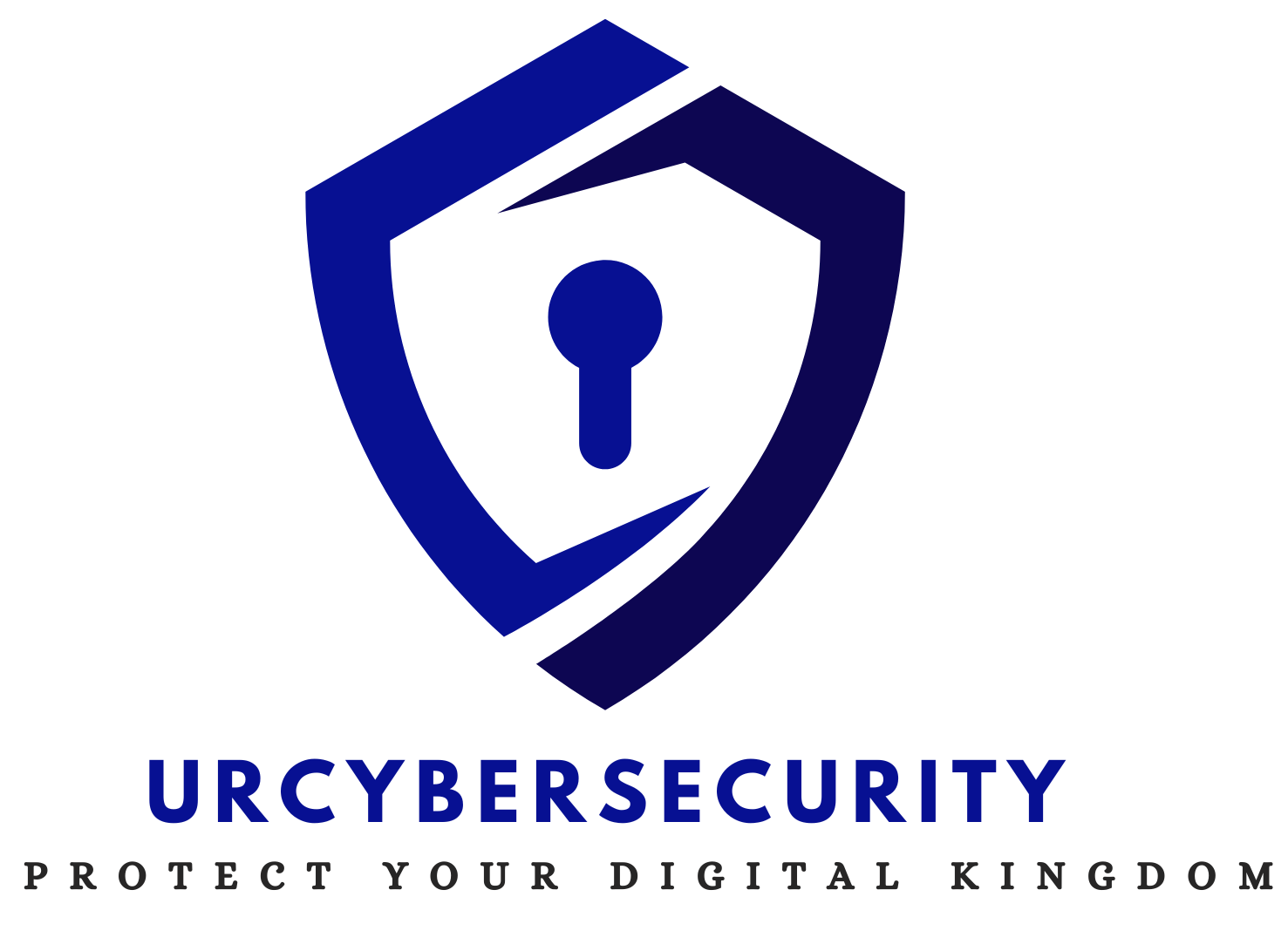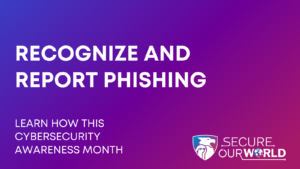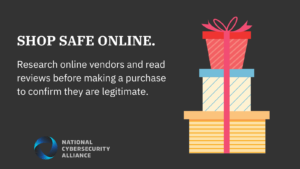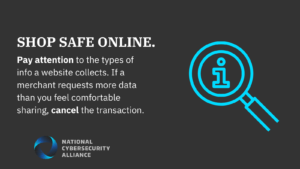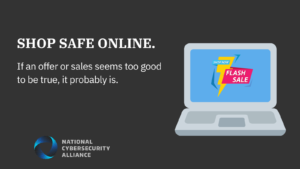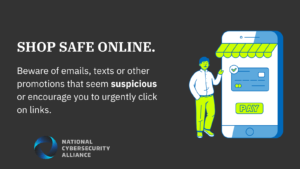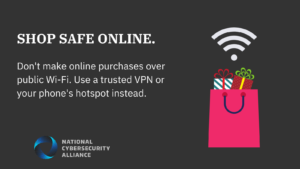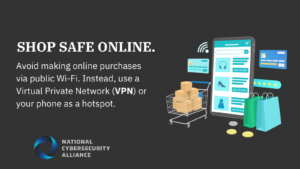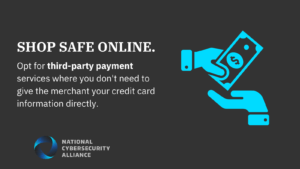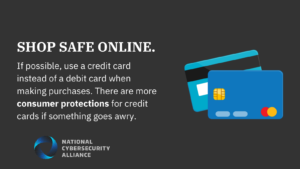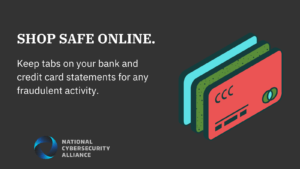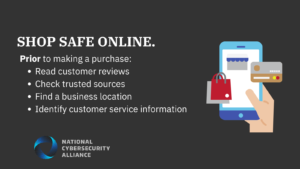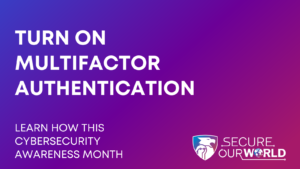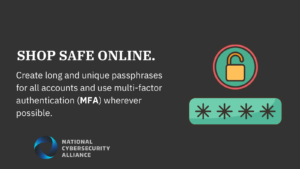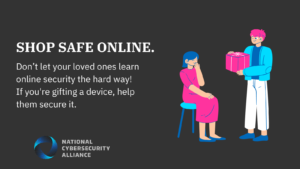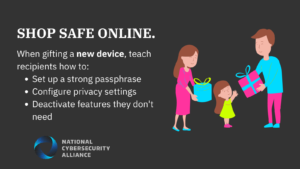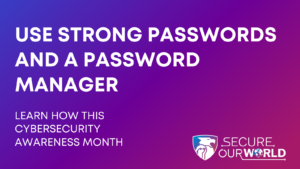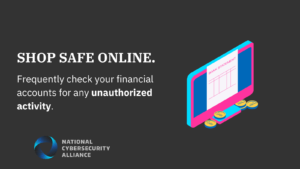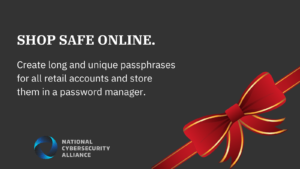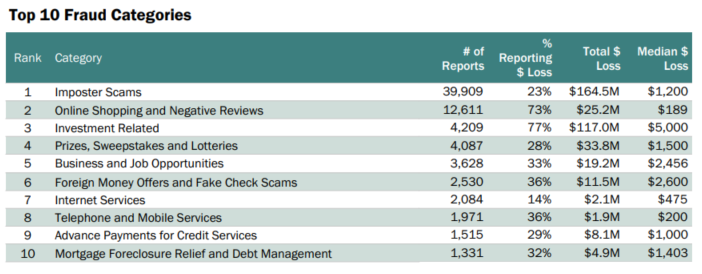Secure Our World
2023
Every Month is Cybersecurity Awareness Month
Join the Movement!
Cybersecurity Awareness Month is like Halloween for the digital world, but instead of ghosts and goblins, we’re spooked by hackers and malware! It happens every October, but there are no costumes involved—just serious online safety.
Think of it as a month-long crash course in keeping your digital life safe and sound. During this month, we remind everyone to lock their virtual doors (that means strong passwords), install security updates (like putting a new lock on your front door), and not to fall for phishing scams (because even fish can’t email).
So, in a nutshell, Cybersecurity Awareness Month is our annual reminder to be a bit more cautious in the online jungle.
Stay safe, stay smart, be cyber aware, Protect yourself, show that you care!
1.Strong Passwords
Crafting robust passwords is like building a digital fortress for your online world. These clever combinations are like riddles for hackers, making them scratch their heads instead of cracking your accounts open like a walnut. So, in a nutshell, strong passwords are your trusty sidekick in the epic battle against cyber villains, keeping your precious data under lock and key.
Think of strong passwords as the guardians of your online kingdom. They’re like those super-secret, top-notch handshake codes that only your true friends (and you) know. They’re the bouncers at the digital nightclub, keeping the cyber-criminals from crashing the party. So, when it comes to passwords, make ’em strong enough to fend off even the sneakiest online troublemakers!
Uppercase letters (A-Z)
Lowercase letters (a-z)
Numbers (0-9)
Special characters (e.g., !, @, #, $, %)
Example: P@ssw0rd$ecureEm@il!
2.Password Managers
Password managers are specialized software applications or services created to aid individuals in securely generating, storing, and overseeing their passwords. They provide a secure and convenient means to arrange and safeguard the multitude of login information essential for the various online accounts and services we utilize on a daily basis.
3.Multi-Factor Authentication (MFA)
MFA, which is also recognized as Two-Factor Authentication (2FA) or Two-Step Verification, serves as a security measure aimed at bolstering the authentication procedure and introducing an additional level of safeguarding for online accounts and systems. Its purpose is to fortify the security of user accounts and systems, thereby diminishing the likelihood of unauthorized access. This technology mandates users to furnish a minimum of two distinct authentication elements drawn from the subsequent three categories:
Something You Know: This is typically a password or Personal Identification Number (PIN). It’s the traditional knowledge-based factor.
Something You Have: This involves a physical item that only the user possesses, such as a smartphone, a smart card, or a hardware token.
Something You Are: This refers to biometric authentication methods, such as fingerprint or facial recognition.
4.Phishing Attacks
Phishing attacks, the scheming chameleons of the cyberworld, belong to the crafty realm of “Social Engineering.” They’re like sneaky con artists in the digital realm, trying to coax folks into revealing their deepest secrets—stuff like login credentials, personal tidbits, or the keys to their virtual vaults. Picture this: they put on disguises fancier than a masquerade ball, pretending to be your favorite company, a government bigwig, or even that long-lost online buddy who swore they’d never ask for money. Once they’ve charmed their way into your heart (and inbox), they’ll sweet-talk you into doing something wild, like clicking a link, nabbing a mysterious file, or spilling the classified beans.
5.Recognizing and Reporting
Recognizing and reporting phishing attacks is essential to prevent falling victim to such scams. Here are some key steps to identify and report phishing attacks:
What Can You Do?
Check the Sender’s Email Address or Phone Number
Verify the Message Content
Examine Links and URLs
Be Cautious of Unsolicited Requests
Verify with the Legitimate Source
6.Software Updates
Why do we update software?
- To address vulnerabilities or weaknesses discovered in prior versions.
- Protection against malware, such as viruses, ransomware, and spyware.
- Helps safeguard your personal and sensitive data.
- Introduces new features, usability improvements, and performance enhancements.
- Compatibility with the latest hardware and other software applications.
- Using outdated software may lead to legal or regulatory compliance issues. Industries such as healthcare, finance, and government often have strict requirements regarding software security and updates.
- Be proactive. Attackers are continually developing new methods to breach systems.
People Hacker
Confessions of a burgler for hire.
Social Engineering: The Science of Human Hacking
Why hack into something when you could just ask for access?
Social Engineering and Digital Defense Survival Guide
For the Everyday Person: Tools & Tactics to Protect Your Privacy and Identity from Cybercriminals
